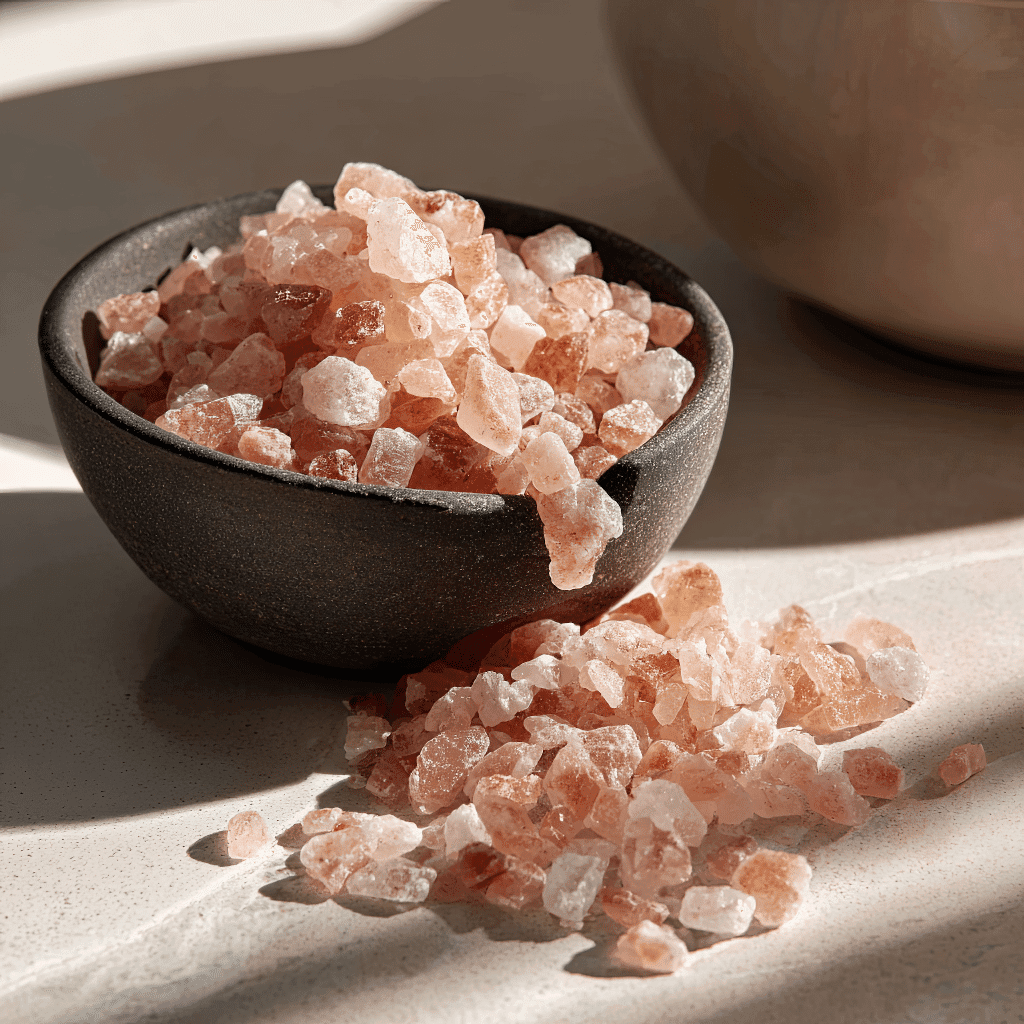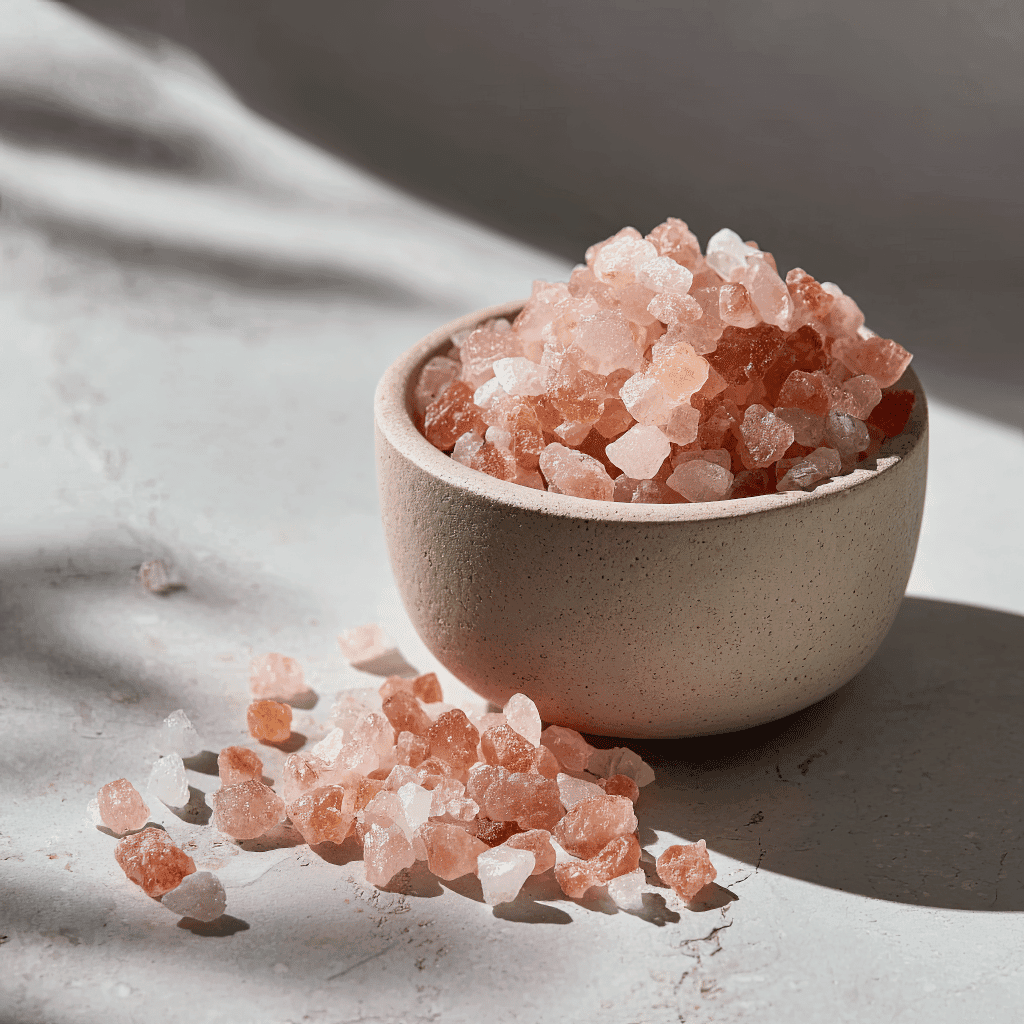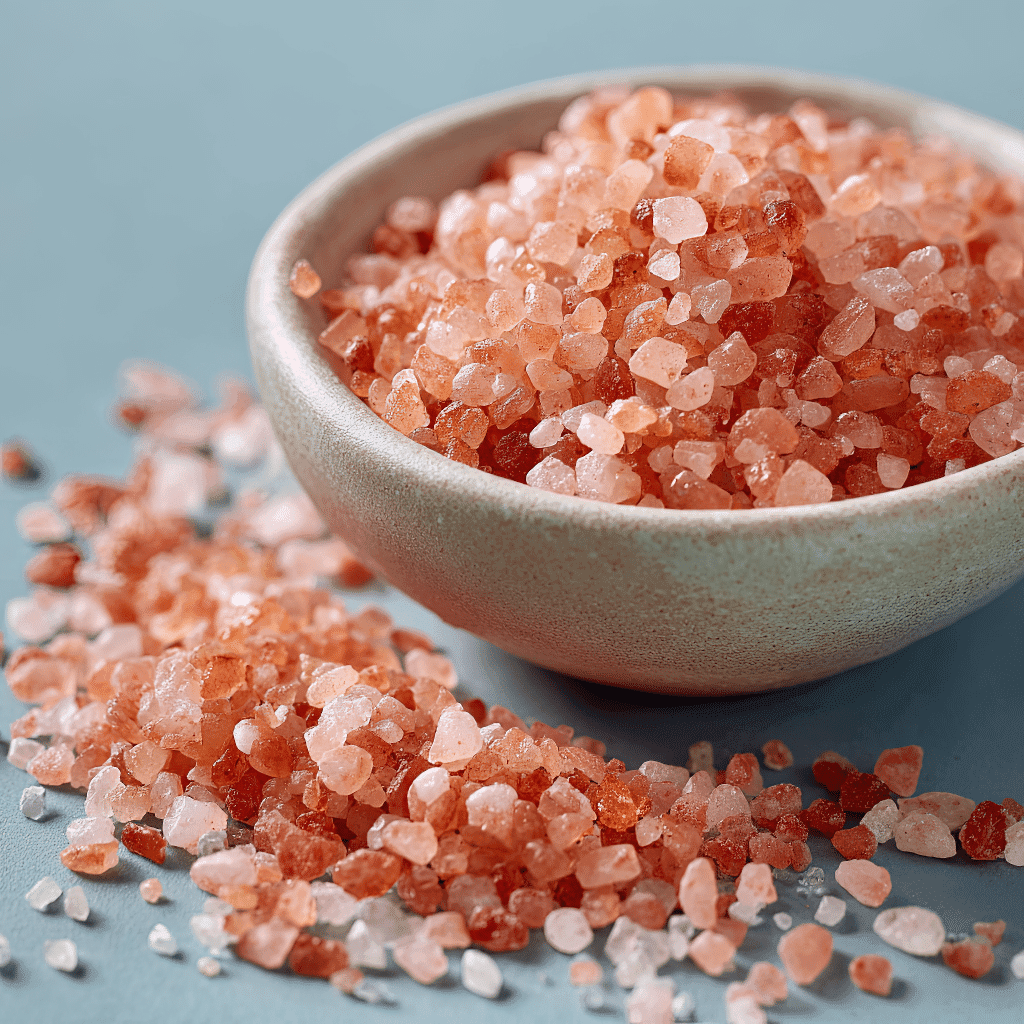Introduction:
Pink Tibetan salt is one of those things people either love or are just starting to hear about. Maybe it’s the pretty pink color, or perhaps it’s all the talk about its supposed health perks and that weight loss “pink salt trick” tied to Mounjaro. Whatever the case, this ancient salt has moved from mountain caves into modern kitchens and wellness trends. In this article, we’ll dig into what makes pink Tibetan salt special, how it stacks up against sea salt, and whether it actually lives up to the hype.

Table of Contents
Table of Contents
The Story Behind Pink Tibetan Salt
Pink Tibetan Salt and My Grandmother’s Healing Soup
Pink Tibetan salt was something I didn’t grow up seeing in a shaker. It entered my life in a pot of steaming soup my grandmother made back in Ohio—a rich chicken broth laced with garlic, herbs, and a curious pinkish crystal she swore “kept the bones strong.” At the time, I didn’t know she was using pink Tibetan salt. Years later, while sourcing ingredients for a farm-to-table dinner near Asheville, I spotted that same salt at a natural foods market and was flooded with memories. I now keep a small jar by my stove like she did—always within reach.
Pink Tibetan salt is mined from ancient salt deposits in the Himalayas, particularly in areas of Pakistan and Tibet. That soft pink shade you see in pink Tibetan salt isn’t just for looks—it comes from tiny amounts of minerals like iron, magnesium, and potassium. These minerals also impart a slightly different flavor to the salt. Unlike the white stuff in most salt shakers, this one doesn’t go through heavy processing. It’s usually hand-mined and left pretty much the way nature made it, which is part of the appeal for people looking for something more natural..
I love using this pink salt in dishes where its delicate flavor can shine, like in these organic ramen noodles or sprinkled over honey garlic salmon bites just before serving. It’s about enhancing rather than overpowering. And maybe, just maybe, keeping tradition alive.
What Makes Pink Tibetan Salt So Special?
It isn’t just beautiful—it’s rich in over 80 minerals, some of which support hydration, electrolyte balance, and even digestive health. That’s part of the hype behind the “pink salt trick” for Mounjaro users, a weight-loss medication where hydration and mineral balance are crucial. Many users claim that adding pink Tibetan salt to warm lemon water in the morning helps reduce nausea and boost energy levels.
While more scientific studies are needed to confirm all the claims, one thing is clear: pink Tibetan salt is more than hype. Its chemical simplicity and natural trace minerals offer a cleaner alternative to heavily refined salts.
Pink Salt Trick & Weight Loss Connection
The Pink Tibetan Salt Trick for Mounjaro and Weight Loss
Pink Tibetan salt has become popular among Mounjaro users for what’s now dubbed the “pink salt trick.” Mounjaro, a medication used to manage blood sugar and support weight loss, often causes side effects like nausea and fatigue. Many users have found that sipping warm water with lemon and a pinch of pink Tibetan salt first thing in the morning helps ease these symptoms.
Why does this work? Pink Tibetan salt helps replenish electrolytes and minerals that may be depleted due to reduced food intake or the side effects of medication. It promotes hydration and provides small amounts of magnesium and potassium, two essential minerals for maintaining muscle function and nerve balance. When you’re eating less or fasting, your body can benefit from trace minerals without added calories.
The pink salt trick isn’t some magic fix, but it’s a simple, natural way to support wellness, especially if you’re trying to eat more mindfully or manage your weight. Personally, I like using it in my sugar-free soft-baked oatmeal raisin cookies. It adds just the right touch of flavor without taking away from the soft sweetness of the oats and raisins.
Can Pink Tibetan Salt Actually Help You Lose Weight?

Sure, pink Tibetan salt isn’t going to melt fat on its own—but it can be a helpful part of a balanced weight loss plan. Because it’s unrefined, it doesn’t come with the additives or chemical treatments you’ll find in regular table salt. I’ve seen it’s a good option if you’re trying to avoid bloating or stick to a low-sodium routine. It’s simple, clean, and fits easily into everyday meals..
Because of its unique mineral content, pink Tibetan salt can support hydration by helping your body maintain a better balance of fluids, especially when you don’t go overboard with it. Lately, I’ve been sprinkling a little into my morning smoothie bowls or protein-packed baked oatmeal. It adds a nice flavor boost and helps me feel like I’m starting the day with something that’s both tasty and nourishing.
If you’re following a wellness routine—whether for Mounjaro or just to feel better—pink Tibetan salt is an easy, beautiful, and supportive ingredient to keep in your pantry.
Why Is It Pink? Origins and Mineral Makeup
What Gives Pink Tibetan Salt Its Color?
The soft pink hue of pink Tibetan salt comes from trace minerals, mostly iron oxide, which is basically natural rust. That’s what gives it that warm, rosy blush. The salt itself comes from ancient seabeds hidden deep beneath the Himalayas, untouched by today’s pollution, which is part of what makes it feel so raw and real.
And that color isn’t just for show—it points to a rich mix of over 80 minerals, including calcium, magnesium, potassium, and, of course, iron. That’s what makes pink Tibetan salt more than just a seasoning. It can actually help with things like hydration and overall mineral balance.
Personally, I like using it in dishes that have bold flavors—like buffalo chicken salad or roasted veggies. It doesn’t overpower, but instead brings out a deeper, more savory edge. Just a small pinch really does lift the whole dish.
Sourced from the Earth, Not the Factory
Unlike regular table salt, which is usually processed, stripped of minerals, and even bleached, pink Tibetan salt is mined by hand using simple, traditional methods. It comes from salt caves near the base of the Himalayas, in areas of Tibet and Pakistan where locals have been gathering it for centuries. It’s about as close to nature as salt can get. Because it’s handled so naturally, the salt keeps its original minerals and structure intact—nothing added, nothing taken away.
Pink Tibetan salt is never refined, bleached, or processed with anti-caking agents. That means it’s as close to the earth as salt can get—something I deeply value as a cook who loves incorporating clean, elemental ingredients into soulful meals like creamy Tuscan chicken soup.
When you reach for pink Tibetan salt, you’re reaching for a mineral-rich seasoning pulled from the mountains, not manufactured in a lab. That’s the kind of connection to food that makes home cooking feel sacred.
Pink Tibetan Salt vs Sea Salt — The Honest Comparison
Is Pink Tibetan Salt Better Than Sea Salt?
Pink Tibetan salt often gets compared to sea salt, and while both are more natural than heavily refined table salt, they’re not quite the same. Pink salt is mined from ancient underground deposits that formed millions of years ago, long before modern pollution. Sea salt, on the other hand, comes from evaporated seawater—which can sometimes carry traces of contaminants. The big difference? It really comes down to purity and how much each one is processed.
Many oceans today are contaminated with microplastics and heavy metals, which can affect the purity of sea salt. In contrast, pink Tibetan salt comes from protected underground mines, far removed from modern pollution. This makes pink Tibetan salt an appealing choice for those focused on clean, toxin-free nutrition.
The flavor is another story. Sea salt tends to be sharper and more saline, while pink Tibetan salt has a milder, earthier finish. I prefer it for slow-cooked meals like chicken thigh pasta, where the salt needs to enhance rather than overpower. Its coarse crystals also add a delicate crunch when used as a finishing touch on roasted vegetables or avocado toast.
The Disadvantages of Pink Tibetan Salt

As wonderful as pink Tibetan salt is, it has its drawbacks. First, it’s expensive—sometimes up to five times the cost of standard sea salt or table salt. For home cooks on a budget, it’s not the most economical seasoning. Also, while pink Tibetan salt does contain trace minerals, the amounts are pretty small. You’d have to eat way more than is healthy, actually, to meet your daily mineral needs—and that’s not ideal, especially with the sodium. So, it’s best to see it as a flavorful bonus, not a primary source of nutrients..
Another potential downside? The health halo. Many assume pink Tibetan salt is significantly healthier, but at the end of the day, it’s still salt. It should be used mindfully, especially by those with high blood pressure or kidney conditions.
That said, when used wisely, pink Tibetan salt can be both a culinary and aesthetic upgrade. It’s why I’ll still reach for it in my favorite comfort recipes, like topping it on steak from my cooking chart reference or finishing off a crisp salad for a subtle, satisfying crunch.
FAQs
What is the pink salt trick for Mounjaro?
The pink salt trick for Mounjaro involves drinking a glass of warm water with lemon and a pinch of pink Tibetan salt first thing in the morning. Many Mounjaro users find this helps reduce nausea, restore electrolyte balance, and improve hydration—especially important during appetite suppression and calorie reduction.
What is so special about pink salt?
Pink Tibetan salt stands out because it’s unrefined and rich in over 80 trace minerals like magnesium, potassium, and iron. Its natural sourcing from ancient salt mines and its subtle, earthy flavor make it a favorite among health-conscious cooks and wellness advocates alike.
Why is Tibetan salt pink?
Pink Tibetan salt gets its color from trace minerals, especially iron oxide. These minerals are naturally present in the salt’s original Himalayan deposits, giving it its signature pink hue and slightly different taste profile compared to regular table salt.
What is the disadvantage of pink salt?
Sure, pink Tibetan salt has its perks, but it’s not perfect. For one, it costs a lot more than regular salt. And yeah, it does have trace minerals—but not enough to really count toward your daily nutrition. At the end of the day, it’s still salt, and using too much can mess with your blood pressure or put extra strain on your kidneys. So, like anything, it’s best in moderation.
Conclusion:
People often talk about pink Tibetan salt as if it were some trendy thing, but it has been around for a long time. It comes from these old mountain salt caves and hasn’t gone through all the refining and bleaching like regular table salt. What I like is that it adds a bit of depth to food—and yeah, it looks nice too.
If you’re into the whole pink salt trick with Mounjaro, or just trying to cut back and eat cleaner, it’s a solid swap. Just don’t go overboard. It’s still salt at the end of the day.
Follow us on Pinterest and Facebook for more mouthwatering ideas.